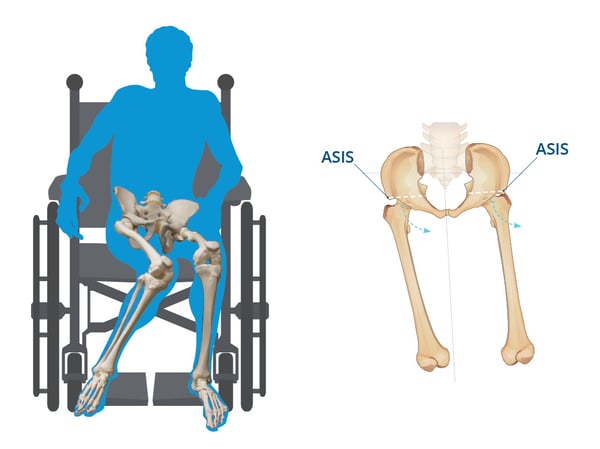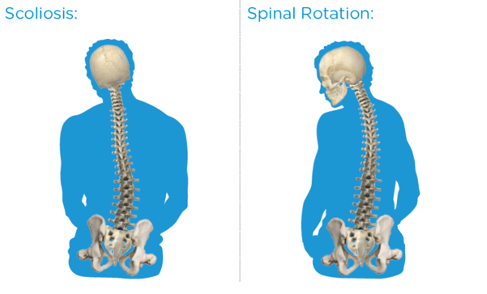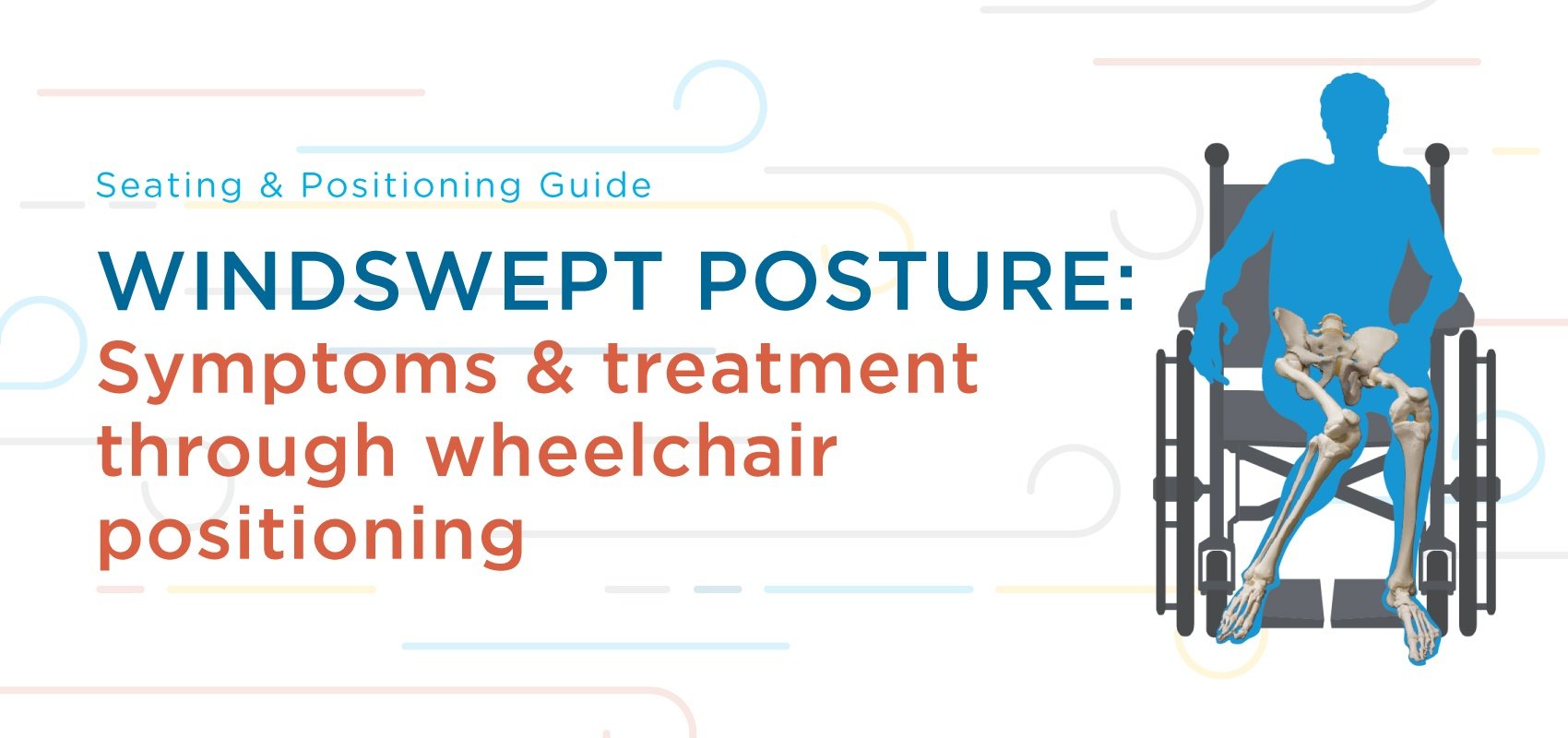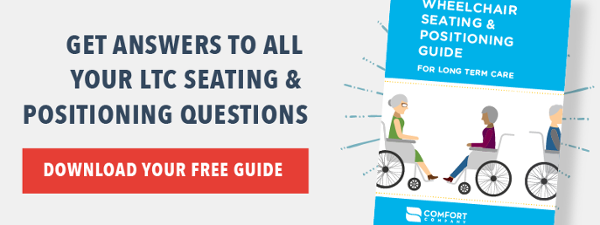Part 8 in our LTC Seating & Positioning series intended to shed some light on the mystery of seating and positioning in the LTC setting. See Part 1, Part 2, Part 3, Part 4, Part 5, Part 6, & Part 7. Looking for more information on seating and positioning? Check out our digital, rehab-focused Wheelchair Seating & Positioning Guide here.
We wouldn’t be able to discuss abnormal postures without mentioning windswept posture, also known as windswept deformity. This postural description has more to do with abnormalities at the hip joints and lower extremities than describing the pelvis alone.
Windswept posture is often seen in individuals that are non-ambulatory with:
- Cerebral Palsy
- Hip dislocation/subluxation
- Multiple revisions of hip joint replacements
- Scoliosis
- Osteochondritis dissecans
- Joint weakness
- Decreased ROM
An ill-fitting wheelchair system that doesn’t provide sufficient support and alignment to the pelvis and femurs can cause the windswept posture. The wheelchair may be the culprit when:
- The seat depth is too shallow, not providing enough femoral support and lower extremity alignment
- The seat width is too narrow, causing rotation in the chair and poor lower extremity alignment
- The seat width is too wide, increasing the likelihood of an obliquity and poor lower extremity alignment
- Seat-to-floor height is too low, causing the knees to be higher than the hips with poor femoral contact and lower extremity alignment
- A hammocking seat sling causes the pelvis to collapse and poor alignment of lower extremities
- Only one leg rest increases the likelihood of an obliquity and the legs being swept to one side
- The footplate is too high, decreasing femoral contact
What are the pelvis and LEs doing?
With a windswept posture, the pelvis usually presents with a pelvic rotation or a pelvic obliquity. Windswept posture can be seen with a posterior pelvic tilt or less commonly with an anterior pelvic tilt when the lower extremities are not supported or aligned well in the wheelchair system.
To paint a picture of a windswept deformity with broad strokes, the legs may look as if a big gush of wind has come along and swept both legs to one side of the chair. One leg may be in external rotation and abduction at the hip, while the other leg is internally rotating and adducting toward midline. The lower extremities give the impression they were "swept" away together to one side of the chair.

What is going on at the spine?
With windswept posture, the spine will usually follow the pattern of the underlying pelvic posture
- Pelvic obliquity with a scoliosis of the spine
- Pelvic rotation with a spinal rotation

Wheelchair positioning goals when presented with windswept posture:
Once again, consider if the abnormality is fixed or flexible. We should NOT try to correct any abnormality that is fixed, or we will cause undue pain to the resident. If the windswept posture is flexible, the goal can be to correct it while remembering to take it slowly and avoid making drastic, sudden changes. With these parameters in mind, consider these tips:
- Avoid the use of ELRs that decrease femoral contact with seat surface and promote windswept posture.
- Windswept posture often accompanies either a rotation or an obliquity, so follow the goals for those underlying causes of these postures.
Look for:
- A pre-contoured cushion with medial abductors and tapered lateral adductors that will provide leg troughs. These troughs will act as boundaries and borders for maximum pelvic and lower extremity alignment to prevent excessive internal/external rotation, adduction/abduction at the hip joints.
- Cushions that can be built up or minimized to compensate for ROM limitations, and maximize femoral contact of the lower extremities for maximum stability and alignment.
Sometimes added accessories are needed such as:
- Lateral knee blocks
- Lateral pelvic/thigh supports
- Medial Knee blocks
So now that you understand what is going on with windswept posture, my hopes are that you will be able to easily identify it on your quarterly screens and during the evaluation. Remember that windswept posture often accompanies a rotation or obliquity, and if that's the case, then follow the goals for the underlying cause of this posture. I assure you, the resident will thank you for it!

Ana Endsjo, MOTR/L, CLT
Clinical Education Manager LTC Division
Ana Endsjo has worked as an occupational therapist since 2001 in a variety of treatment settings. She has mainly worked with the geriatric population, dedicated to the betterment of the treatment of the elderly in LTC centers. Her focus has been on seating and positioning and contracture management of the nursing home resident. With this experience, her hope is to guide other therapists, rehab directors, nurses, and administrators through educational guides, blogs, webinars, and live courses in her role as Clinical Education Manager for the long term care division.

